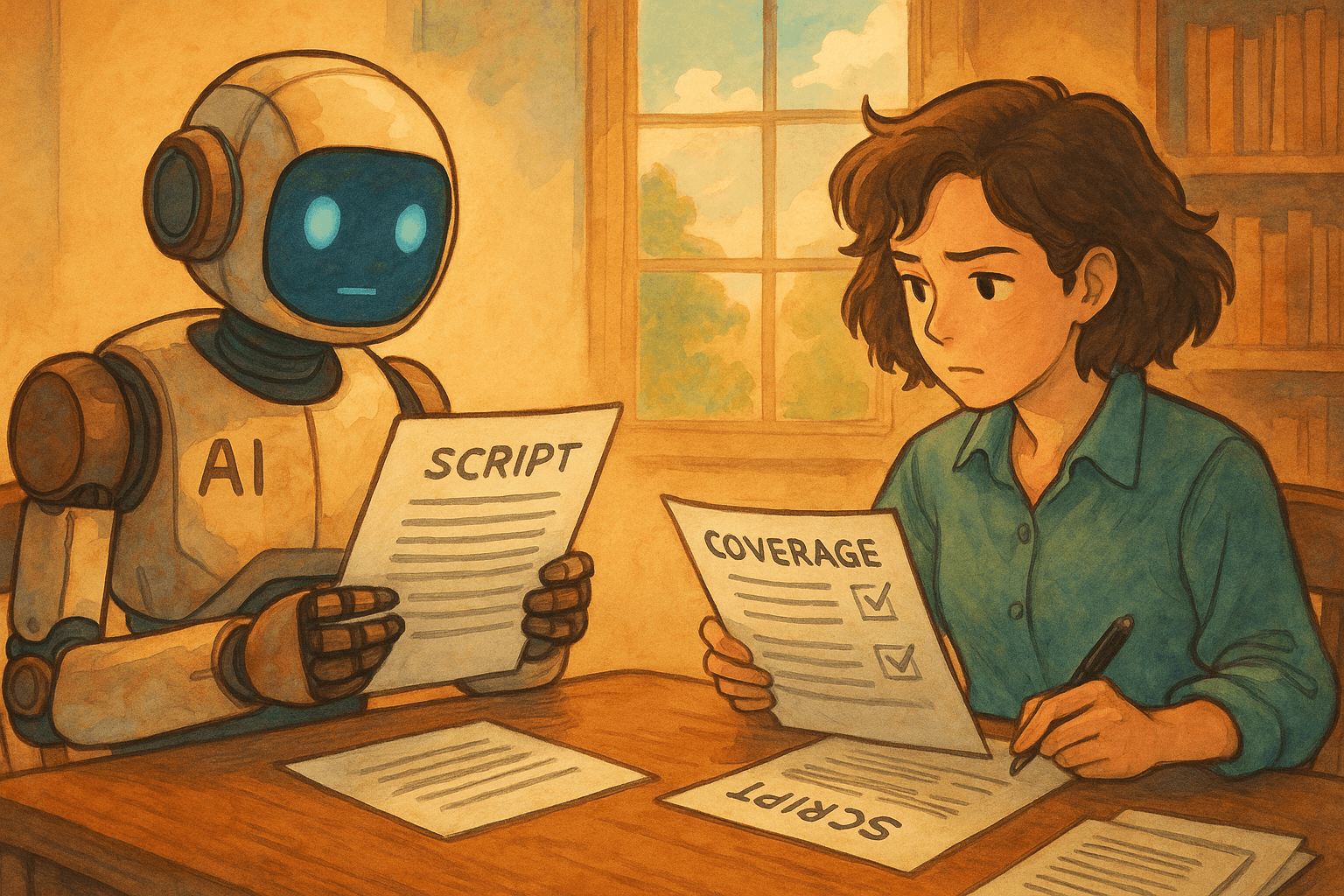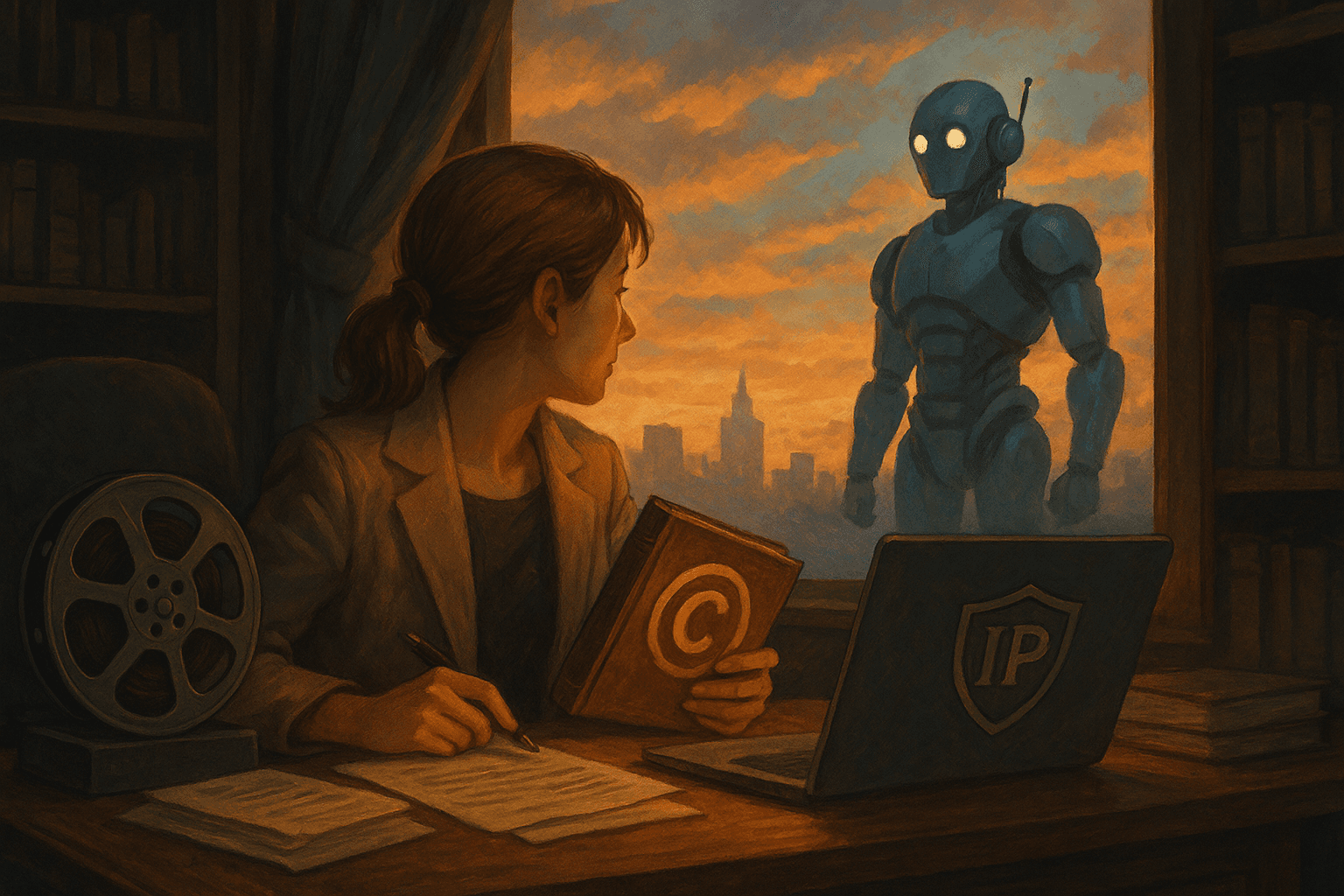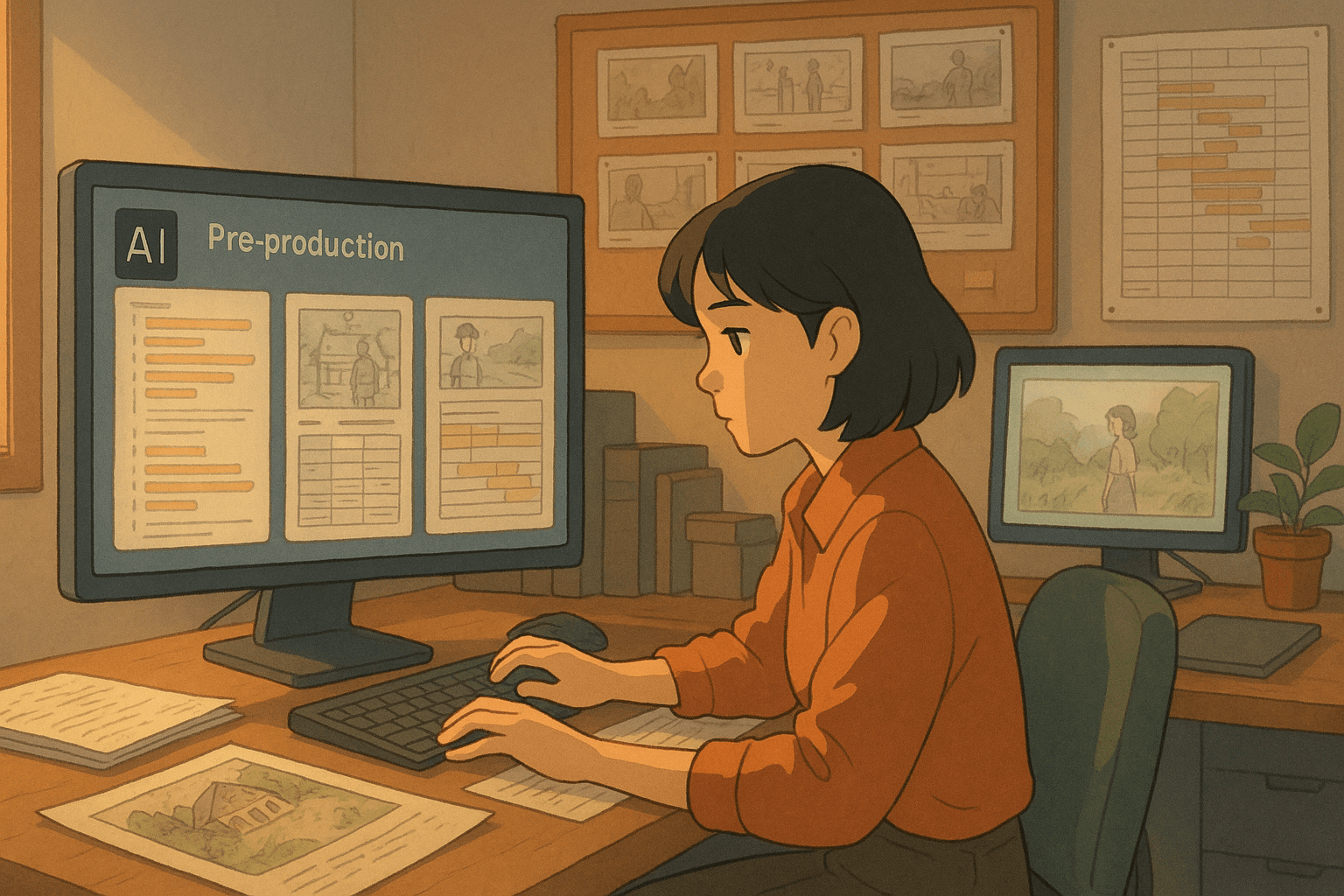Introduction: The Coverage Dilemma
Script coverage remains a bottleneck in development. Studios, producers, and writers must decide: should we use fast AI coverage or stick with seasoned human readers? Rather than argue one is superior, this post will deconstruct exactly how they differ, where each excels, and how to get the most out of both.
We’ll show side-by-side examples, explore the pros and trade-offs, and offer workflow models that combine both AI and human insight.
What Is Script Coverage — and What Does It Judge?
Coverage typically includes:
- One-page logline / synopsis
- Notes: strengths, weaknesses, suggested changes
- Beat map or scene-by-scene summary
- Character arcs, plot risks, market fit
- Recommendation (Pass / Consider / Recommend)
A human reader brings experience, intuition, and awareness of marketplace taste. An AI model brings speed, consistency, and objective structural analysis.
AI Script Coverage: What It Does Best
- Speed & Scalability
AI can process hundreds of scripts per day, at a fraction of the cost/time of human readers. - Pattern Recognition & Consistency
AI notices repetitive plot devices, pacing gaps, structural imbalances, subtext trends. - Unbiased Structural Feedback
Lacking personal taste or fatigue, AI is consistent in its evaluation criteria. - Data-driven critique
Generates metrics (e.g. percentage of dialogue vs description, proportion of scenes per act) that humans often overlook.
But AI struggles with nuance:
- Subtle tone, emotional beats, thematic weight
- Genre expectations or marketables that defy formula
- Dialogue “voice” and originality judgments
- Viability worries tied to casting, budget, or production constraints
Human Coverage: Strengths & Limitations
Strengths:
- Intuitive sense of what “clicks” — voice, hook, audience appeal
- Experience-based judgment on genre, subtext, or current trends
- Ability to interpret ambiguous or experimental storytelling
- Personal connection: empathy for character arcs, emotional arcs
Limitations:
- Variable quality depending on reader skill or fatigue
- Subjective bias or overemphasis on favorite tropes
- Slower turnaround times and higher cost
- May overlook structural metrics or undercurrents that AI notices
Side-by-Side Example
Note: This is a simplified illustrative example.
Scenario: A mid-budget thriller about a former detective haunted by a cold case.
| Element | AI Feedback | Human Feedback |
|---|---|---|
| Pacing | Act II drags: 6 consecutive “talk” scenes, with <10% action; recommend inserting an inciting confrontation earlier. | The detective’s emotional stakes felt low in mid-act—insert personal stakes or flashback. |
| Character Agency | Protagonist passive in scenes 25–35; recommend adding decision node in Scene 30. | Loved the character voice in dialogue but felt emotional arc was ambiguous in last third. |
| Dialogue | Average sentence length: 14 words; 45% passive voice; flagged weak verbs. | Some lines feel stereotypical—consider elevating subtext in exchanges. |
| Hook / Market Fit | Strong hook, but protagonist background is common (ex-detective). Recommend emphasizing unique element (e.g. memory loss, supernatural hint). | The downstairs twist (betrayal by separate detective) is strong—may need earlier foreshadowing. |
| Recommendation | Consider (if reworked) | Recommend (with moderate rewrite) |
From this, you see AI’s strength in structure and metrics; human’s strength in tone, theme, market insight, and emotional voice.
Hybrid Workflow Models
-
AI Pre-Screen + Human Final Pass
Run all submissions through AI to weed out weak pages. Only send promising ones to human readers. -
Dual Coverage, Weighted Blend
Generate both AI and human notes. Combine them in a composite report: use AI for structural checks, human for color, nuance, and market sense. -
AI-Assisted Underlay, Human Overwrite
Let AI draft a beat map or flagged issues. Human reader reviews, adjusts, and adds emotional/creative commentary. -
Iterative Loop Approach
After human coverage, generate a second-stage AI review to catch missed structural inconsistencies or unintended repetition introduced by rewrites.
Best Practices & Guidelines
- Always version your drafts – compare changes over time with coverage input
- Maintain prompt logs & human feedback history to understand how coverage evolved
- When using AI models, define coverage criteria / rubric rather than “freeform”
- Calibrate human readers with example scripts and coverage to reduce variance
- Use weighted blending (e.g. 70% human, 30% AI) for final decision-making
- Continuously audit AI performance—test random scripts to see where it misfires
Future Trends to Watch
- Fine-tuned genre-specific coverage models (thrillers, rom-coms, horror)
- Explainable AI coverage – human-readable reasoning of what the AI “saw”
- Marketplace integration – AI coverage plus marketplace scoring or agent matching
- Interactive coverage tools – writers can query AI coverage responses (“Why did you flag Act II?”)
- Adaptive models that learn from human feedback to improve coverage quality
Conclusion
AI coverage is no silver bullet—but it’s a powerful tool when used smartly. The sweet spot lies in hybrid systems: use AI for speed, structure, and consistency; use human readers for nuance, emotional resonance, and market insight.
By combining both, development teams can sift more scripts, iterate faster, and still preserve the soul of human creativity in storytelling.
References & Further Reading
- Prescene blog coverage of AI script tools (e.g. AI script coverage)




